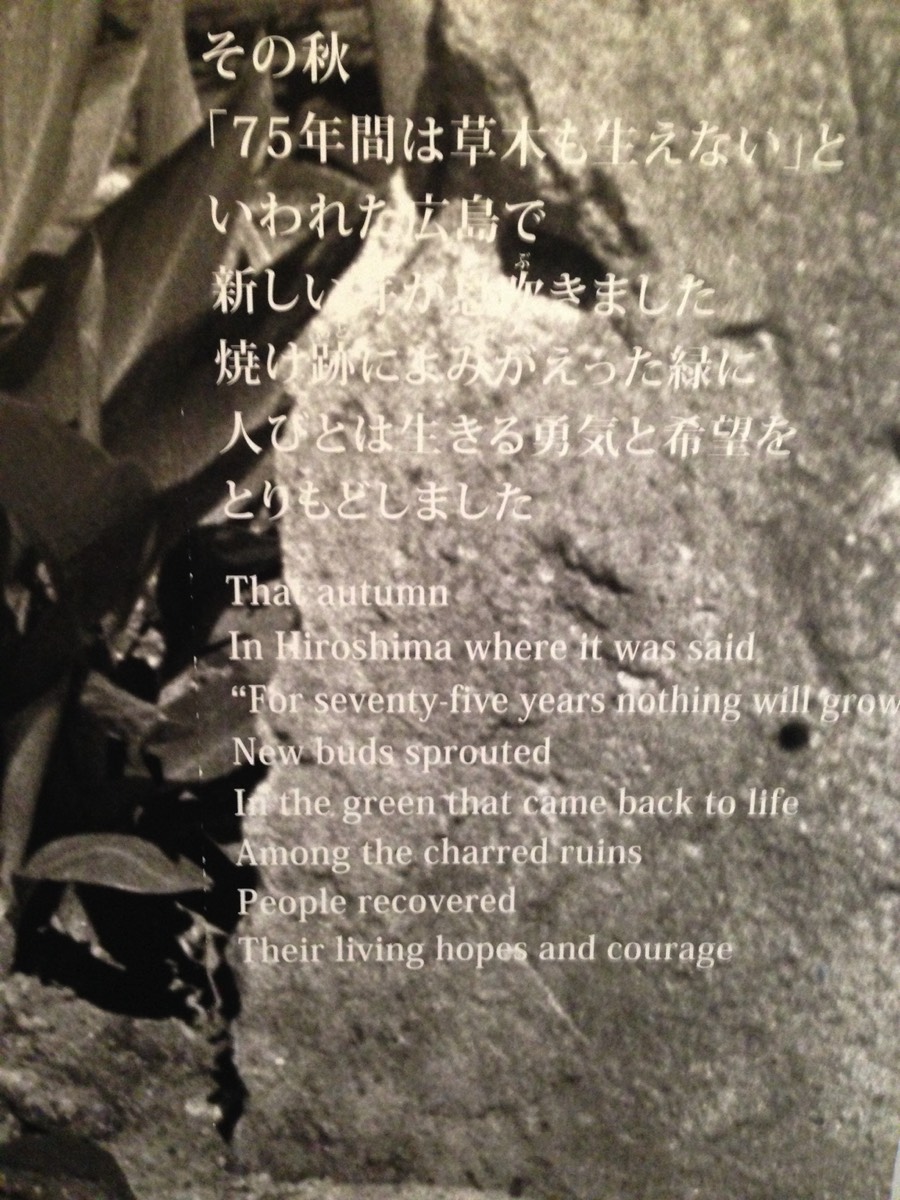
For more information about this project, contact Dr. Hope Elizabeth May, here.
"A Revolution of Thought" is a "Thought Community" dedicated to investigating the philosophical, ethical, legal and spiritual dimensions of organized violence and the ways in which inquiry and rational activity are used in its service, with a special focus on the testing of nuclear weapons, their use in Hiroshima and Nagasaki, and the Peace Culture that has developed in response thereto. Hiroshima Peace Culture includes developments in international law and public education, on which this site is primarily focused. This site also includes information about prior activities/resources connected to this initiative when it was under the auspices of the Center for International Ethics at Central Michigan (CIE) from 2014-2021. These prior activities include the Hiroshima/Nagasaki 30 poster exhibition that was installed in Anspach Hall in 2014, and then again in Powers Hall in 2020-2021. Following the elimination of the CIE in 2021, the Cora di Brazzà Foundation assumed stewardship of this project.
The term "Thought Community" was coined by Ludwik Fleck in his book The Genesis and Development of a Scientific Fact - originally published in German in 1935. A Thought Community [Denkgemeinschaft] consists in a "Thought Collective" which embraces a certain "Thought Style" by which information is assimilated and organized. Our Thought Community organizes incoming information around the ideas of peace (construed positively and not merely as the "absence of war" but as the presence of human rights, justice and respect for human dignity), peace history (including the history of international law), humanity, harmony, and autonomy.
Our community includes organizations such as:
1) Student Pugwash USA
2) The Cora di Brazzà Foundation
3) The Hiroshima Peace Culture Foundation
4) The Hiroshima Peace Memorial Museum
5) Peace Culture Village
6) Central Sustainability at Central Michigan University
The seed from which this Thought Community grew was an alliance between the CIE and The Hiroshima Peace Memorial Museum. Although the CIE no longer exists, the seed continues to grow, both metaphorically and literally (via the Hiroshima Saplings initiative).
The image beneath the mushroom cloud was captured at the Hiroshima Memorial Museum in 2013, at the end of a tour. It states "That autumn in Hiroshima where it was said 'for seventy-five years nothing will grow,' new buds sprouted in the green that came back to life. Among the charred ruins, people recovered their living hopes and courage."
The term "Thought Community" was coined by Ludwik Fleck in his book The Genesis and Development of a Scientific Fact - originally published in German in 1935. A Thought Community [Denkgemeinschaft] consists in a "Thought Collective" which embraces a certain "Thought Style" by which information is assimilated and organized. Our Thought Community organizes incoming information around the ideas of peace (construed positively and not merely as the "absence of war" but as the presence of human rights, justice and respect for human dignity), peace history (including the history of international law), humanity, harmony, and autonomy.
Our community includes organizations such as:
1) Student Pugwash USA
2) The Cora di Brazzà Foundation
3) The Hiroshima Peace Culture Foundation
4) The Hiroshima Peace Memorial Museum
5) Peace Culture Village
6) Central Sustainability at Central Michigan University
The seed from which this Thought Community grew was an alliance between the CIE and The Hiroshima Peace Memorial Museum. Although the CIE no longer exists, the seed continues to grow, both metaphorically and literally (via the Hiroshima Saplings initiative).
The image beneath the mushroom cloud was captured at the Hiroshima Memorial Museum in 2013, at the end of a tour. It states "That autumn in Hiroshima where it was said 'for seventy-five years nothing will grow,' new buds sprouted in the green that came back to life. Among the charred ruins, people recovered their living hopes and courage."



